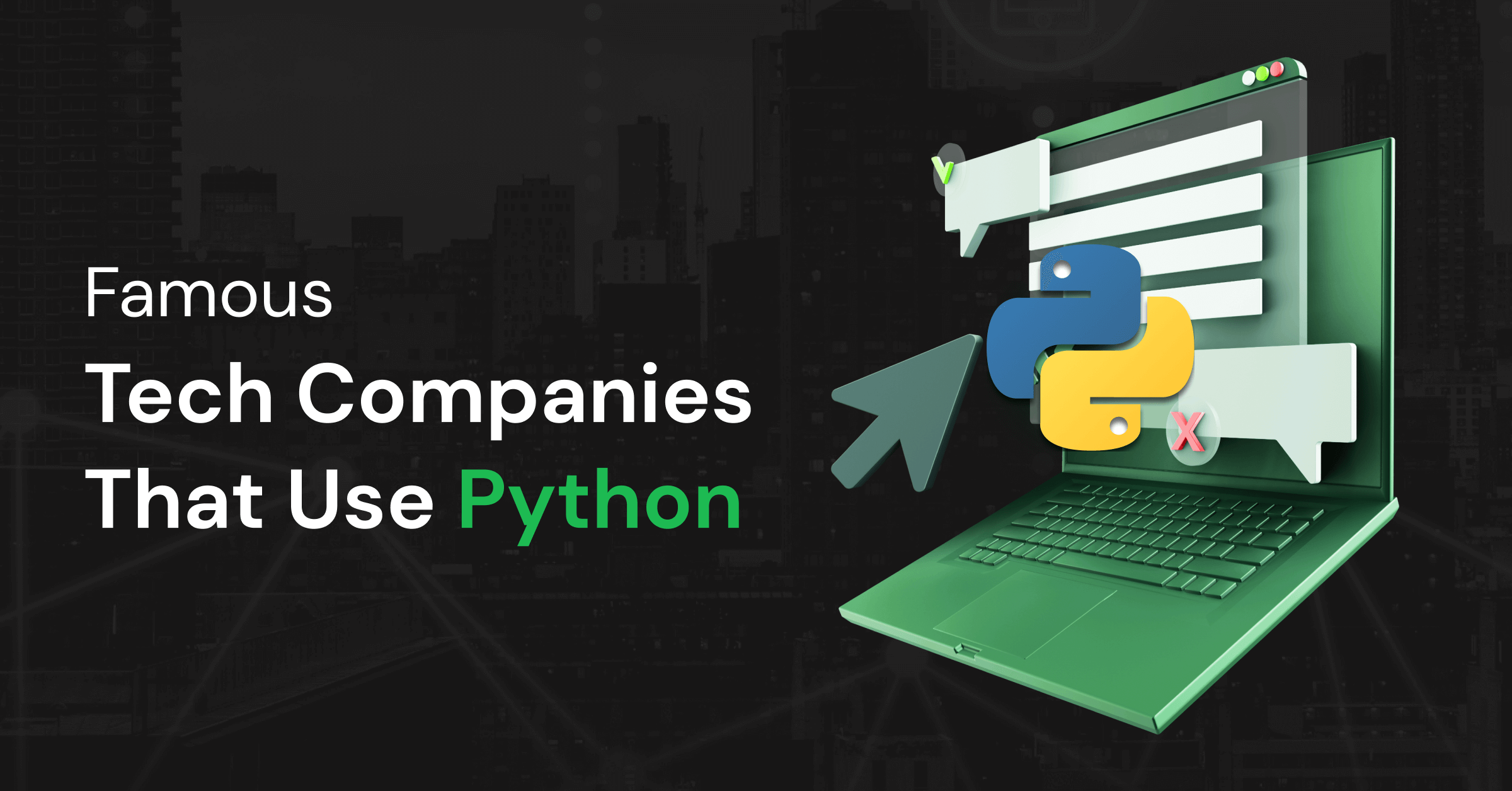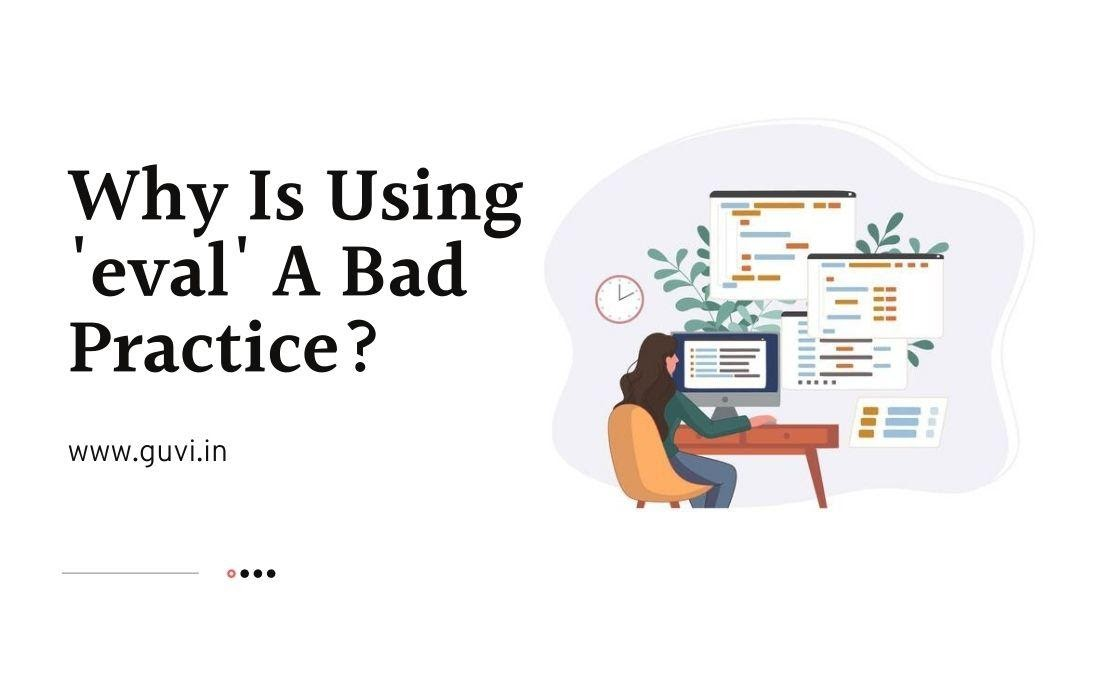![Mastering Recursion in Python: A Comprehensive Guide [2025] 1 Post thumbnail](https://www.guvi.in/blog/wp-content/uploads/2024/05/Mastering-Recursion-in-Python_-A-Comprehensive-Guide-2025-1.webp)
Mastering Recursion in Python: A Comprehensive Guide [2025]
Mar 03, 2025 10 Min Read 3237 Views
(Last Updated)
At the core of many advanced programming techniques lies a concept as intriguing as it is fundamental: recursion.
Mastering recursion in Python is not just about adding another tool to your programming arsenal; it’s about embracing a different way to solve problems, where solutions depend on solutions to smaller instances of the same problem.
This recursive approach is not only elegant but efficient in handling tasks that might otherwise seem baffling.
This comprehensive guide will unfold the mysteries of recursion in Python, starting from understanding the basic concept, through writing your first recursive function, to exploring its common use cases.
Table of contents
- 1) Understanding the Concept of Recursion
- 1) Definition and Basics
- 2) Real-life Analogies for Better Understanding
- 2) How Recursion Works in Python
- 1) The Recursive Function Call Process
- 2) Understanding the Call Stack
- 3) Writing Your First Recursive Function
- 1) Setting Up the Base Case
- 2) Implementing the Recursive Case
- 4) Exploring Common Use Cases for Recursion
- 1) Solving Mathematical Problems
- 2) Working with Data Structures
- 5) Avoiding Common Pitfalls with Recursion
- 1) Maximizing Stack Overflow Error Prevention
- 6) Tail Recursion in Python
- 1) What is Tail Recursion?
- 2) Converting Standard Recursion to Tail Recursion
- 7) Recursion vs Iteration in Python
- 1) Performance Comparison
- Concluding Thoughts...
- FAQs
- What is recursion in Python?
- What are the two types of recursion in Python?
- Where is recursion used?
1) Understanding the Concept of Recursion
Recursion in Python is a fundamental concept that can significantly enhance your coding skills and allow you to solve complex problems with elegant solutions.
At its core, recursion refers to a coding technique where a function calls itself.
This might seem simple, but it opens up a world of possibilities for solving problems that are inherently recursive or can be broken down into smaller, similar problems.
1.1) Definition and Basics
1) To understand recursion, it’s essential to grasp that most programming problems can be solved without it. However, recursion shines in situations that lend themselves to self-referential definitions. 1)
- For instance, consider the problem of traversing tree-like data structures. These structures are nested and fit perfectly with a recursive approach, making the code cleaner and more concise compared to a clunky non-recursive solution.
2) Python supports function recursion, meaning a defined function can call itself. This capability is powerful, allowing you to loop through data to reach a result efficiently.
- However, caution is necessary as improper recursion can lead to functions that never terminate or consume excessive memory or processing power.
3) Recursion can be defined as the process of defining something in terms of itself. It allows a complicated function to be broken down into smaller sub-problems, making sequence creation simpler and the code more effective.
- Yet, it’s important to note the disadvantages, such as the potential for increased memory and time consumption, difficulty in debugging, and the sometimes challenging nature of reasoning about recursion.
Also Read: Top 10 Python Terms Every Beginner Should Know
Before diving into the next section, ensure you’re solid on full-stack development essentials like front-end frameworks, back-end technologies, and database management. If you are looking for a detailed Full Stack Development career program, you can join GUVI’s Full Stack Development Career Program with Placement Assistance. You will be able to master the MERN stack (MongoDB, Express.js, React, Node.js) and build real-life projects.
Alternatively, if you want to explore Python through a self-paced course, try GUVI’s self-paced Python course.
1.2) Real-life Analogies for Better Understanding
To demystify recursion further, let’s explore some real-life analogies:
- Russian Dolls (Matryoshka Dolls) Analogy: Just like opening a Russian doll reveals another doll inside, and so on until the smallest doll is found, recursion involves a function calling itself repeatedly until a base condition is met.
- Inception Analogy: Similar to the movie “Inception,” where characters experience dreams within dreams, recursion creates multiple layers of function calls until reaching the base case.
- Maze Exploration Analogy: Navigating a maze requires deciding which path to take at each intersection. Recursion is akin to exploring a maze, where you may need to explore a new path or backtrack, breaking a complex problem into simpler subproblems.
- Cooking Recipe Analogy: Following a recipe might require repeating a step multiple times, such as chopping vegetables. In recursion, a function can call itself to perform a specific task repeatedly.
- Tree Analogy: Imagine a tree with branches that have smaller branches, and so on. Each branch represents a function call, and the smaller branches represent subsequent function calls within each function, illustrating how recursion breaks down a problem into smaller parts.
While recursion is not suitable for every situation and requires careful consideration, it can provide a mathematically elegant approach to solving problems when used correctly.
Must Know About What Is Python Used For?
2) How Recursion Works in Python
2.1) The Recursive Function Call Process
- Recursion in Python is a powerful programming technique where a function calls itself to solve a problem.
- This process allows you to break down complex problems into smaller, more manageable subproblems. When you create a recursive function, it’s crucial to define a base case.
- The base case is a condition that stops the recursion by returning a result without making any further recursive calls. This prevents the function from entering an infinite loop and crashing your program.
For a recursive function to be effective, it must always progress towards the base case. Each recursive call should bring the problem closer to a solution that does not require further recursion.
Without this progression, the function may run indefinitely without converging on a solution.
- Define a Recursive Function: Start by defining a function that can call itself.
- Identify the Base Case: Determine the condition under which the function will no longer make recursive calls.
- Ensure Progress: Ensure each recursive call moves the function closer to the base case.
Consider the example of calculating the factorial of a number, where the factorial of n (denoted as n!) is the product of all positive integers less than or equal to n.
The recursive approach involves multiplying n by the factorial of n-1 until reaching the base case of 1.
def factorial(n):
if n == 1:
return 1
else:
return n * factorial(n-1)In this example, the base case is when n equals 1. Each call to factorial reduces n by 1, ensuring progress towards the base case.
Code Example:
def factorial(n, depth=0):
indent = " " * depth # For better readability of the output
if n == 0:
print(f"{indent}factorial(0) = 1 (base case)")
return 1
else:
print(f"{indent}factorial({n}) = {n} * factorial({n-1})")
result = n * factorial(n-1, depth+1)
print(f"{indent}Returning {result} for factorial({n})")
return result
# Test the function
print("Factorial of 5:")
factorial(5)Output:
![Mastering Recursion in Python: A Comprehensive Guide [2025] 2 Screen Shot 2024 08 07 at 10.51.49 PM](https://www.guvi.in/blog/wp-content/uploads/2024/08/Screen-Shot-2024-08-07-at-10.51.49-PM.png)
2.2) Understanding the Call Stack
- The call stack is a critical concept in understanding how recursion works in Python. It is a data structure that tracks function calls.
- When a function is called, a new frame is added to the call stack containing information such as function arguments and the current position in the code.
- Once the function completes its execution, the frame is removed, and the program returns to the previous frame.
- The call stack operates in a Last-In-First-Out (LIFO) manner. This means the last function called is the first to be completed. In the context of recursion, each recursive call adds a new frame to the call stack.
- If not managed properly, this can lead to stack overflow errors, especially if the recursion is deep or the base case is not reached.
- Function Call: When a function calls itself, a new frame is added to the call stack.
- LIFO Operation: The call stack operates in a LIFO manner, with the last called function being the first to complete.
- Managing the Call Stack: It’s essential to manage the call stack by ensuring the recursive calls progress toward the base case to prevent stack overflow errors.
- Python manages recursive functions using the call stack, where each recursive call adds information to the stack.
- When a function ends, Python removes the information from the top of the stack and continues execution from where the call was made.
- Understanding and managing the call stack is crucial in preventing errors and optimizing recursion in Python.
By grasping these concepts, you’re better equipped to implement recursion in Python effectively, solving problems that lend themselves well to this elegant programming technique.
Also Read: Python | List Of Lists Changes Reflected Across Sublists
3) Writing Your First Recursive Function
When diving into recursion in Python, understanding how to write your first recursive function is crucial. This journey begins with grasping two essential components: the base case and the recursive case.
Both play pivotal roles in ensuring your recursive function operates correctly and efficiently.
Let’s explore these components with a focus on writing a recursive function to calculate the factorial of a number, a common example that beautifully illustrates recursion.
3.1) Setting Up the Base Case
- The base case acts as the anchor for your recursive function, providing a condition under which the recursion stops.
- It’s the scenario where the function can return a result without needing to call itself again. This is critical because, without a base case, your function would call itself indefinitely, leading to a stack overflow error.
- For instance, when calculating the factorial of a number using recursion, the base case occurs when the number reduces to 1.
- In mathematical terms, the factorial of 1 (1!) is 1, providing a straightforward answer without further recursion needed. Here’s how you can set up the base case in Python:
def factorial(n):
if n == 1:
return 1- In this snippet,
if n == 1:checks if the function has reached the base case. Ifnis indeed 1, the function returns 1, effectively stopping the recursion.
3.2) Implementing the Recursive Case
- Once the base case is established, the next step is to implement the recursive case. This is where the function calls itself, each time with a slightly modified argument that moves closer to the base case.
- The recursive case is the heart of recursion, breaking down the problem into smaller instances of itself until it reaches the base case.
- Continuing with the factorial example, the recursive case multiplies the current number
nby the factorial ofn-1. This process repeats until reaching the base case, wherenequals 1. Here’s how to implement the recursive case in the factorial function:
def factorial(n):
if n == 1:
return 1
else:
return n * factorial(n-1)- In the recursive case,
return n * factorial(n-1)calls thefactorialfunction withn-1, reducing the problem’s size with each call. This ensures that with each recursion, the function moves closer to the base case, preventing infinite recursion.
- To answer a common question, yes, a base case can consist of multiple conditions. The primary requirement is that the base case does not lead to further recursive calls.
- For example, a function that prints all combinations of 4 digits might not have a strict base case but instead relies on the iteration’s nature to cease recursion.
By understanding and implementing these two critical components, you are well on your way to mastering recursion in Python.
Remember, the elegance of recursion lies in its ability to simplify complex problems by breaking them down into manageable subproblems, each step guided by the interplay of the base and recursive cases.
Also Read: Becoming A Top Python Backend Developer: Must-Know Technologies [2025]
4) Exploring Common Use Cases for Recursion
Recursion in Python, a powerful programming technique, finds its utilization across a myriad of scenarios, particularly in solving mathematical problems and working with complex data structures. This section delves into these common use cases, illustrating how recursion can simplify and streamline coding tasks that might otherwise seem daunting.
4.1) Solving Mathematical Problems
- Solving Equations Recursively: Recursion can elegantly solve equations that are inherently recursive. For example, to solve an equation recursively, you need an initial value to prevent infinite traversal. By reorganizing the formula to express the next term in terms of the previous ones, recursion provides a straightforward solution path.
Code Example:
def solve_linear_equation(a, b, depth=0):
indent = " " * depth # For better readability of the output
print(f"{indent}Solving {a}x + {b} = 0")
# Base case: if b is 0, the solution x must be 0
if b == 0:
print(f"{indent}Base case: b is 0, x = 0")
return 0
# Recursive case
if a == 0:
raise ValueError("a cannot be 0 if b is not 0.")
# Assume a and b are such that the equation can be solved for integer x
x = solve_linear_equation(a, b % a, depth + 1)
solution = (b - b % a) // a + x
print(f"{indent}Solution found: x = {solution} for {a}x + {b} = 0")
return solution
# Test the function
a = 3
b = -9
print(f"Solving the equation {a}x + ({b}) = 0 recursively:")
solution = solve_linear_equation(a, b)
print(f"Solution: x = {solution}")Output:
![Mastering Recursion in Python: A Comprehensive Guide [2025] 3 Screen Shot 2024 08 07 at 10.55.07 PM](https://www.guvi.in/blog/wp-content/uploads/2024/08/Screen-Shot-2024-08-07-at-10.55.07-PM.png)
- Calculating Factorials: The factorial function is a classic example of recursion in action. The process involves multiplying a number by the factorial of the number minus one until reaching the base case of 1. This approach is not only intuitive but also efficient for calculating factorials.
def factorial_recursive(n):
if n == 1:
return 1
else:
return n * factorial_recursive(n-1)An example of this has already been discussed above when we were discussing how recursion works in python.
- Fibonacci Sequence: Recursion is perfectly suited for generating the Fibonacci sequence, where each number is the sum of the two preceding ones. The recursive function has two base cases and elegantly returns the sum of the previous two calls.
def fibonacci(n, depth=0):
indent = " " * depth # For better readability of the output
if n == 0:
print(f"{indent}fibonacci(0) = 0 (base case)")
return 0
elif n == 1:
print(f"{indent}fibonacci(1) = 1 (base case)")
return 1
else:
print(f"{indent}fibonacci({n}) = fibonacci({n-1}) + fibonacci({n-2})")
result = fibonacci(n-1, depth+1) + fibonacci(n-2, depth+1)
print(f"{indent}Returning {result} for fibonacci({n})")
return result
# Test the function
print("Fibonacci sequence up to F(5):")
for i in range(6):
print(f"F({i}) = {fibonacci(i)}")Output: I have just placed a small bit of the output here, upon executing the code you will see it runs quite long.
![Mastering Recursion in Python: A Comprehensive Guide [2025] 4 Screen Shot 2024 08 07 at 11.01.37 PM](https://www.guvi.in/blog/wp-content/uploads/2024/08/Screen-Shot-2024-08-07-at-11.01.37-PM.png)
- Summing Digits of a Number: Recursion can simplify tasks like summing the digits of a number. By breaking down the problem into smaller instances—separating the last digit and summing it with the sum of the remaining digits—recursion provides a clean solution.
def sum_of_digits(n, depth=0):
indent = " " * depth # For better readability of the output
if n == 0:
print(f"{indent}sum_of_digits(0) = 0 (base case)")
return 0
else:
last_digit = n % 10
remaining_number = n // 10
print(f"{indent}sum_of_digits({n}) = {last_digit} + sum_of_digits({remaining_number})")
result = last_digit + sum_of_digits(remaining_number, depth + 1)
print(f"{indent}Returning {result} for sum_of_digits({n})")
return result
# Test the function
number = 1234
print(f"Sum of digits of {number}:")
sum_result = sum_of_digits(number)
print(f"Sum of digits: {sum_result}")Output:
![Mastering Recursion in Python: A Comprehensive Guide [2025] 5 Screen Shot 2024 08 07 at 11.03.31 PM](https://www.guvi.in/blog/wp-content/uploads/2024/08/Screen-Shot-2024-08-07-at-11.03.31-PM.png)
4.2) Working with Data Structures
- Counting Leaf Items in Nested Lists: Recursion is adept at handling nested data structures, such as lists within lists. By identifying leaf items and employing a stack to manage nested sublists, recursion can efficiently count leaf items, showcasing its ability to navigate complex structures.
- Traversal of Tree-like Structures: Tree traversal is another area where recursion shines. Given the nested nature of trees, a recursive approach to walk through these structures is not only more elegant but often simpler and more readable than iterative solutions.
- Quicksort Algorithm: The Quicksort algorithm, a fast sorting technique, utilizes recursion for its divide-and-conquer strategy. By choosing a pivot and partitioning the list into sublists, recursion sorts each part efficiently, demonstrating the power of recursion in algorithm optimization.
- Working with Recursive Data Structures: Recursive functions and data structures complement each other well. For instance, generating a list or summing all elements of a list can be achieved by defining the problem in terms of a smaller version of itself, which is a hallmark of recursive solutions.
def list_sum_recursive(input_list):
if input_list == []:
return 0
else:
head = input_list[0]
smaller_list = input_list[1:]
return head + list_sum_recursive(smaller_list)Recursion in Python offers a robust framework for tackling problems that might seem intricate at first glance.
By breaking down problems into their base cases and recursively solving for smaller instances, recursion not only simplifies code but also enhances its readability and efficiency.
Whether dealing with mathematical equations or complex data structures, recursion stands out as an invaluable tool in the programmer’s toolkit.
Also Explore: 13 Key Features of Python You Need to Know in 2025
5) Avoiding Common Pitfalls with Recursion
Recursion in Python is a powerful tool, but it comes with its own set of challenges. Understanding and avoiding common pitfalls can significantly enhance the efficiency and robustness of your recursive functions.
Let’s delve into strategies to maximize stack overflow error prevention and optimize recursion for better performance.
5.1) Maximizing Stack Overflow Error Prevention
A stack overflow error occurs when your program runs out of memory in the call stack, usually due to too many nested function calls. This is a common issue in recursion, especially with deep recursion levels. Here are ways to prevent this error:
- Use a Base Case: Ensure your recursive function has a base case that stops the recursion. This prevents the function from calling itself indefinitely.
- Tail Recursion: Tail recursion is a technique where the recursive call is the last operation in the function. While Python doesn’t inherently optimize tail recursion, understanding this concept can help you structure your recursive calls more efficiently.
- Increase Recursion Limit: Python sets a default recursion limit to prevent infinite recursion. You can adjust this limit using
sys.setrecursionlimit(), but do so with caution as it could lead to memory issues. - Iterative Solution: Whenever possible, consider an iterative solution. Iteration doesn’t add to the call stack, thus avoiding the stack overflow issue.
- Emulate Recursion with a Stack: If recursion is essential, consider emulating it using your own stack data structure. This approach gives you more control over the memory used.
By implementing these techniques, you can prevent stack overflow errors and ensure your recursive functions run smoothly.
Must Read: Python Objects 101: How to Create and Master Them With Real-World Projects
6) Tail Recursion in Python
Tail recursion in Python plays a significant role in optimizing recursive functions by minimizing memory consumption and preventing stack overflow errors. Understanding tail recursion and its implementation can greatly enhance the efficiency of recursive solutions in Python.
6.1) What is Tail Recursion?
- Tail recursion occurs when a recursive function’s last operation is the recursive call itself. This means that there is nothing left to execute after the recursion call, allowing for potential optimizations by the compiler or interpreter.
- Unlike standard recursion, where each call requires additional memory to manage the call stack, tail recursion optimizes memory usage by reusing the stack frame for subsequent calls.
- This unique characteristic of tail recursion helps in reducing the risk of stack overflow errors, particularly in scenarios involving deep recursive calls.
- In Python, however, it’s important to note that the language does not inherently optimize tail recursive functions.
- This is primarily due to concerns regarding the clarity and debuggability of code, as optimizations could make it more challenging to trace through recursive calls.
- Despite this, understanding and implementing tail recursion can still provide a foundation for writing more efficient and understandable recursive functions.
6.2) Converting Standard Recursion to Tail Recursion
The process of converting a standard recursive function to a tail recursive one involves the use of an accumulator—an additional argument that carries the result of intermediate computations.
This technique allows the function to pass the partial results of calculations from one recursive frame to the next, thereby adhering to the tail recursion structure.
- Introduce a Helper Function: Begin by creating a helper function within your main function. This helper function will carry the accumulator, which is used to store intermediate results.
- Set the Accumulator to the Base Case: When running the helper function, initialize the accumulator with a value that represents the base case of your recursion. This ensures that the recursion has a clear termination point.
- Pass Intermediate Results: In each recursive call, pass the result of the current computation along with any necessary parameters to the next recursive call. This ensures that each step is built upon the previous computations.
For example, consider a simple non-tail-recursive function for calculating the factorial of a number:
def factorial(n):
if n == 0:
return 1
else:
return n * factorial(n - 1)
# Test the function
number = 5
print(f"Factorial of {number}: {factorial(number)}")Output:
![Mastering Recursion in Python: A Comprehensive Guide [2025] 6 Screen Shot 2024 08 07 at 11.06.42 PM](https://www.guvi.in/blog/wp-content/uploads/2024/08/Screen-Shot-2024-08-07-at-11.06.42-PM.png)
Implementing tail recursion in Python, despite the lack of automatic optimization, can still offer a clearer understanding of how to structure recursive functions efficiently.
By focusing on the final action of the recursive call and minimizing memory usage through the effective management of intermediate results, programmers can tackle recursive problems more effectively.
Also Explore: Mastering Top Python Basics: Generator Expressions & Comprehensions [2025]
7) Recursion vs Iteration in Python
In Python, the choice between recursion and iteration is pivotal, impacting performance, readability, and the overall approach to problem-solving.
Both methods have their advantages and disadvantages, which vary depending on the problem at hand, the programming environment, and the language’s capabilities.
7.1) Performance Comparison
When comparing recursion and iteration in Python, it’s essential to understand the underlying mechanics of each.
Recursion involves a function calling itself to solve smaller instances of the same problem, while iteration repeats a block of code until a certain condition is met.
- Memory and Processing Overhead: Recursion incurs additional memory and processing overhead due to the allocation of a new stack frame for each function call. This can lead to stack overflow errors for very deep recursion. Iteration, on the other hand, typically involves simpler control flow and does not suffer from the same overhead, making it often more memory-efficient and faster.
- Time Complexity: The time complexity of recursion can be exponential in cases where there are a considerable number of recursive calls, making it less efficient than iteration for certain problems. Iteration usually has a lesser time complexity as it involves a straightforward repetition of a block of code.
- Overhead Comparison: Recursion has the overhead of repeated function calls, increasing the time complexity of the code. Iteration does not involve such overhead, making it generally more efficient in terms of performance.
- Handling Infinite Loops: Infinite recursion can lead to a CPU crash due to stack overflow, while infinite iteration will stop only when memory is exhausted, potentially leading to a more graceful degradation.
| Aspect | Recursion | Iteration |
|---|---|---|
| Memory Overhead | High (due to stack frames) | Low |
| Processing Overhead | High (function calls) | Low |
| Time Complexity | Can be exponential | Generally lesser |
| Risk of Infinite Loop | CPU crash (stack overflow) | Memory exhaustion |
Kickstart your Full Stack Development journey by enrolling in GUVI’s certified Full Stack Development Career Program with Placement Assistance where you will master the MERN stack (MongoDB, Express.js, React, Node.js) and build interesting real-life projects. This program is crafted by our team of experts to help you upskill and assist you in placements.
Alternatively, if you want to explore Python through a self-paced course, try GUVI’s self-paced Python course.
Concluding Thoughts…
Throughout this guide, we have journeyed through the intricacies of recursion in Python, uncovering its elegance and power as a programming technique.
From mastering the basics and understanding its core concepts through analogies and technical explanations to implementing your first recursive function and exploring its use cases, we’ve seen how recursion can simplify complex problems and enhance code readability.
It’s clear that whether we are calculating factorials, navigating tree-like structures, or optimizing algorithms, recursion offers a mathematically elegant solution to problems that are naturally recursive or can be decomposed into simpler versions of themselves.
Despite Python’s lack of inherent optimization for tail recursion, we’ve learned how to circumvent common pitfalls associated with recursive programming, such as stack overflow errors and excessive memory use.
Also Explore: Top 10 Reasons Why Python is Super Popular in 2025
FAQs
Recursion in Python is a programming technique where a function calls itself in order to solve smaller instances of the same problem until a base condition is met, which stops the recursive calls.
The two types of recursion in Python are direct recursion, where a function directly calls itself, and indirect recursion, where a function is called by another function, which in turn calls the first function.
Recursion is used in various applications such as algorithm design (e.g., quicksort, mergesort), solving mathematical problems (e.g., factorial, Fibonacci sequence), parsing hierarchical data structures (e.g., XML, JSON), and in problems that can be broken down into similar sub-problems.





















Did you enjoy this article?